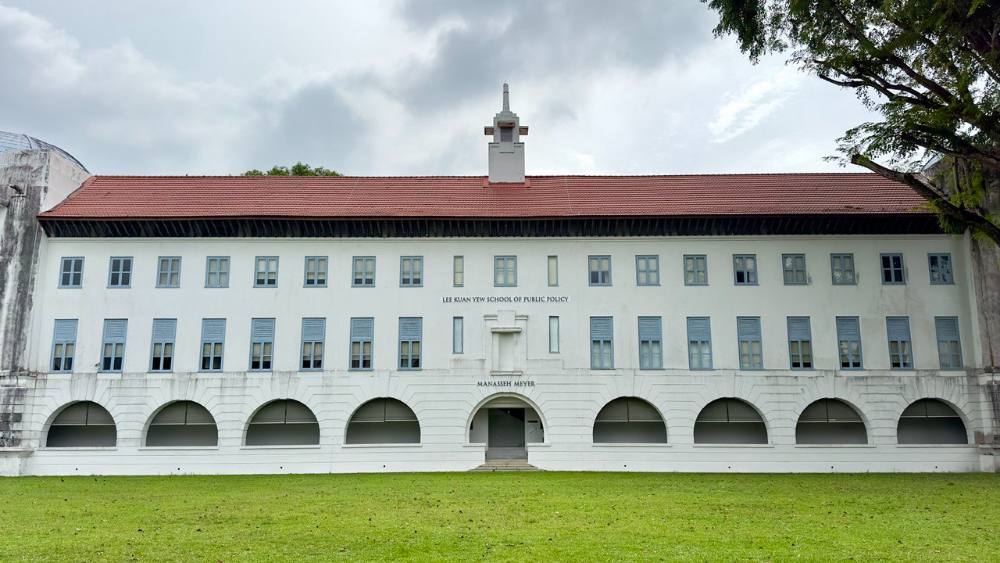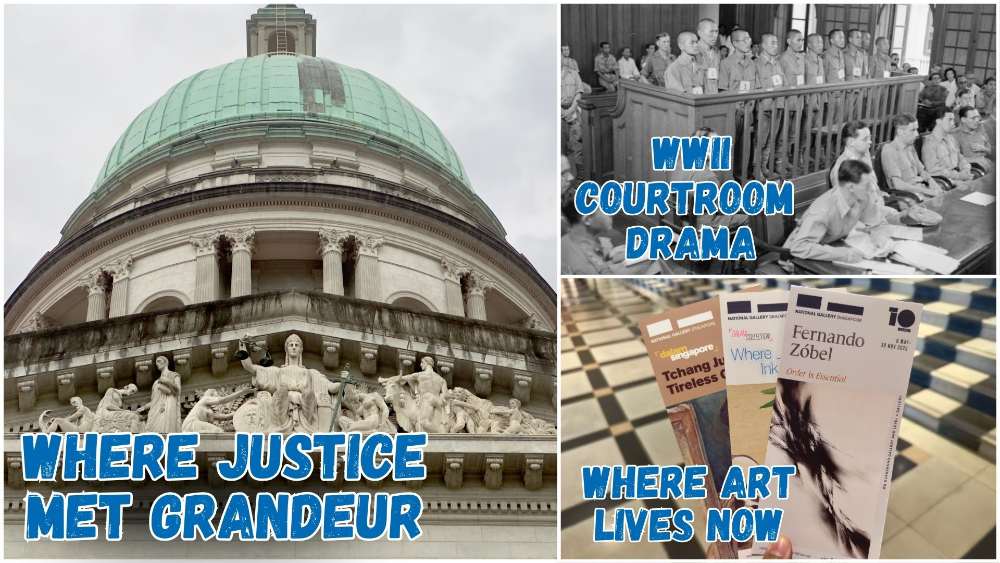National Monuments Of Singapore: Former Raffles College
What is a National Monument? Who gazettes them? How many national monuments are there in Singapore? To date, the Preservation of Sites and Monuments, a division of National Heritage Board, has identified and gazetted 75 buildings, structures and sites of national significance as an integral part of Singapore’s built heritage.
And we're here to tell you all about them - one National Monument at a time!
You've probably passed by or stepped into more than a few of them without realising they were National Monuments: Al-Abrar Mosque, Asian Civilisations Museum, the Civilian War Memorial, Saint Andrew's Cathedral, the Esplanade Park Memorials, Fort Siloso on Sentosa - no need to plan an itinerary for friends visiting from overseas; just show them this article ✌️
In this edition, we put under the magnifying glass the first arts and science college in British Malaya, the Former Raffles College.
📍 Location
The Former Raffles College compound is National Monument #5️⃣6️⃣. Located near other National Monuments such as the Former Command House, and Saint George's Church, the MRT stations nearest to the Former Raffles College compound are Botanic Gardens, and Stevens.
📅 Significant dates
Dates built:
- 1919-1928: The Former Raffles College was built
- 1940s: Block A (today's Li Ka Shing building) was constructed
- 1950s: The Library building (now C. J. Koh Law Library) was erected
- 1966: The Science Tower (currently the Tower Block) was built in 1966
Milestones:
- 22 Jul 1929: The Former Raffles College was officially opened
- 8 Oct 1949: The college merged with King Edward VII College of Medicine (today's College of Medicine Building) to form the University of Malaya
- 2005: The compound became home to the NUS Faculty of Law, Lee Kuan Yew School of Public Policy, and other research institutes
Date collectively gazetted: 11 Nov 2009
📜 History
Situated beside the Singapore Botanic Gardens, the Former Raffles College compound is a hidden gem with a rich history. Commissioned in 1919 to mark the centenary of Sir Stamford Raffles’ arrival in Singapore, it was the first arts and science college in British Malaya. The campus symbolises the British Administration's and philanthropists' dedication to providing quality higher education for locals during Singapore’s colonial era.
Before Raffles College’s establishment, locals had to travel abroad, mainly to England, for tertiary studies. A committee led by then-colonial administrator Sir George Maxwell was set up to decide on a memorial to commemorate the centenary of Raffles' arrival in Singapore. They ultimately settled on a college; it also acted as a tribute to Raffles' contributions to education and research.
Funding for the college came from the Straits Settlements Government, the Federated and Unfederated Malay States, and generous donors, including Sir Manasseh Meyer, a Jewish philanthropist who also funded the construction of the Chesed-El Synagogue; Oei Tiong Ham, an Indonesian-Chinese sugar tycoon; Tan Soo Guan, a Hokkien businessman; and Eu Tong Sen, a prominent Cantonese merchant.
Delays, however, stalled the project until 1928, when construction was completed. The college admitted its first 43 students that year and was officially opened on 22 Jul 1929 by Sir Hugh Clifford, then-Governor of the Straits Settlements and High Commissioner to the Malay states.
When the Second World War arrived in the region in 1941, Raffles College was repurposed as a medical facility, serving as a convalescent hospital (for those recovering from an illness or operation) and an asylum for female medical personnel from Malaya. It also housed survivors from the HMS Repulse and HMS Prince of Wales, the two battleships sunk by the Japanese navy north of Singapore.
College students were drafted as medical staff, and after Singapore fell in 1942, the campus was taken over by the Japanese military as their headquarters.
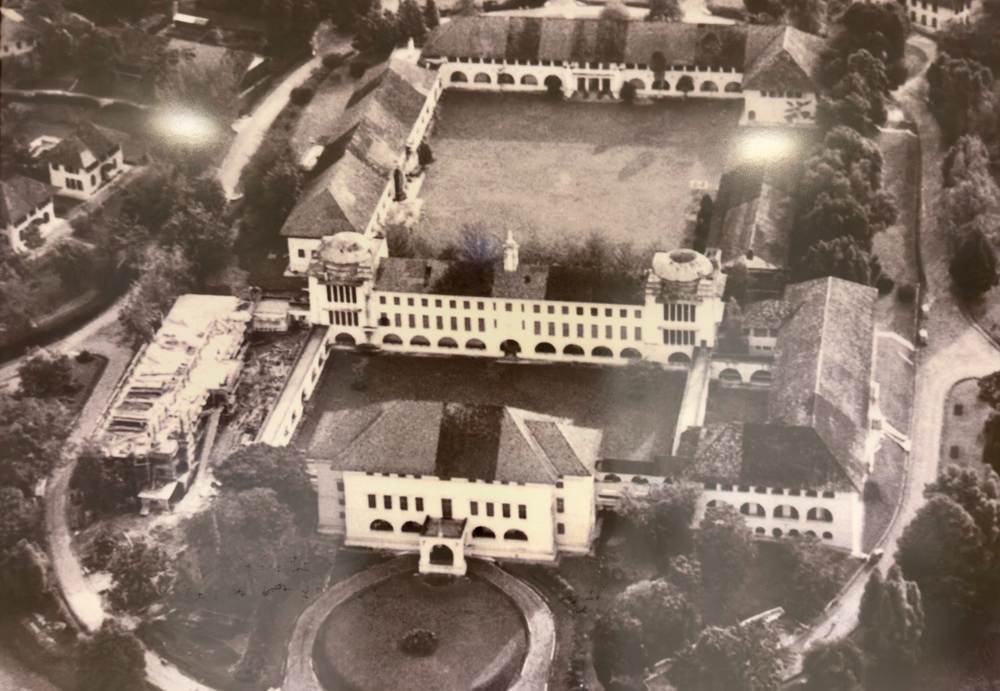 The University of Malaya (1949-1962), showing the faculties of Law, and Engineering, which were added on top of the existing faculties of Art, Science, and Medicine. | IMAGE: PHOTO TAKEN OF EXHIBITED PICTURE IN OEI TIONG HAM BUILDING
The University of Malaya (1949-1962), showing the faculties of Law, and Engineering, which were added on top of the existing faculties of Art, Science, and Medicine. | IMAGE: PHOTO TAKEN OF EXHIBITED PICTURE IN OEI TIONG HAM BUILDING
The college reopened in Oct 1946, and on 8 Oct 1949, it merged with King Edward VII College of Medicine (today's College of Medicine Building, another National Monument) to form the University of Malaya. As student enrolment grew, the campus could no longer accommodate the increasing numbers. This led to the separation of the university into two institutions in 1962 – the University of Singapore (part of today’s National University of Singapore; or NUS) in Bukit Timah and the University of Malaya in Kuala Lumpur. The University of Singapore was located within the compound of the Former Raffles College.
In 1981, NUS moved to Kent Ridge in 1981, but the Bukit Timah campus continued its educational legacy, hosting the National Institute of Education and Singapore Management University. In 2005, it became home to the NUS Faculty of Law, Lee Kuan Yew School of Public Policy, and other research institutes.
Today, the site is known as the NUS Bukit Timah Campus.
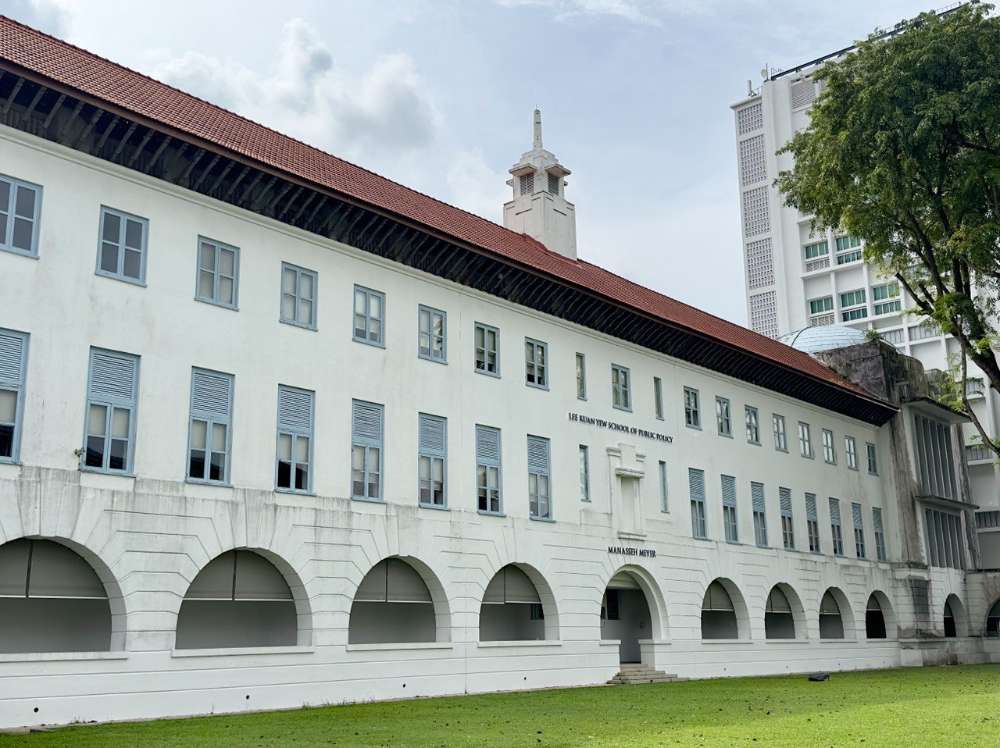 The Manasseh Meyer building is flanked on both ends by cupolas (rounded domes adorning a roof) with flattened domes and has a pylon-like (tower-like) structure emerging from the centre of its roof. | IMAGE: NG KAI
The Manasseh Meyer building is flanked on both ends by cupolas (rounded domes adorning a roof) with flattened domes and has a pylon-like (tower-like) structure emerging from the centre of its roof. | IMAGE: NG KAI
📐 Design and architecture
The campus was designed by British architects Cyril A. Farey and Graham R. Dawbarn. They had won a British Empire-wide architectural competition where the winner would get to design the college. The compound features stately yet simple architecture. Rows of wide arches in the arcades (series of arches that are supported by columns or piers), numerous windows for ventilation, and verandahs to shield against the sun highlight its functional elegance.
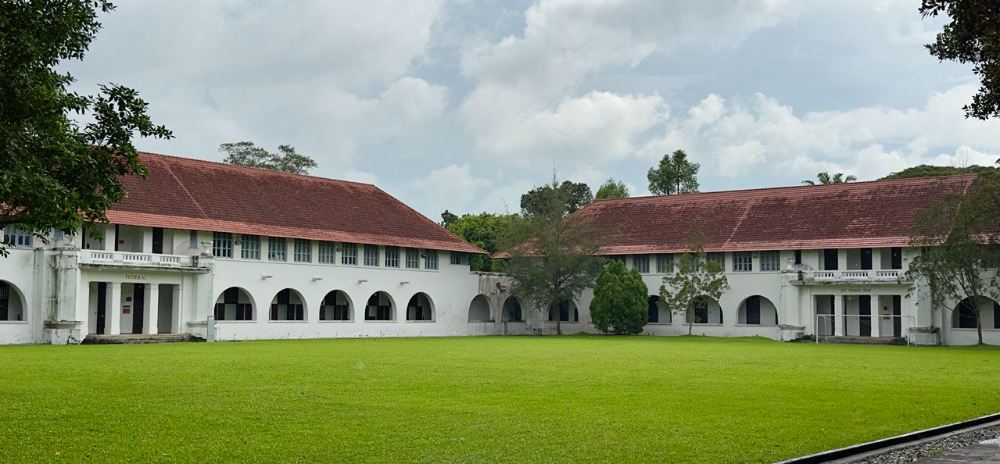 The Federal building (left) and Eu Tong Sen building bordering the Upper Quadrangle. | IMAGE: NG KAI
The Federal building (left) and Eu Tong Sen building bordering the Upper Quadrangle. | IMAGE: NG KAI
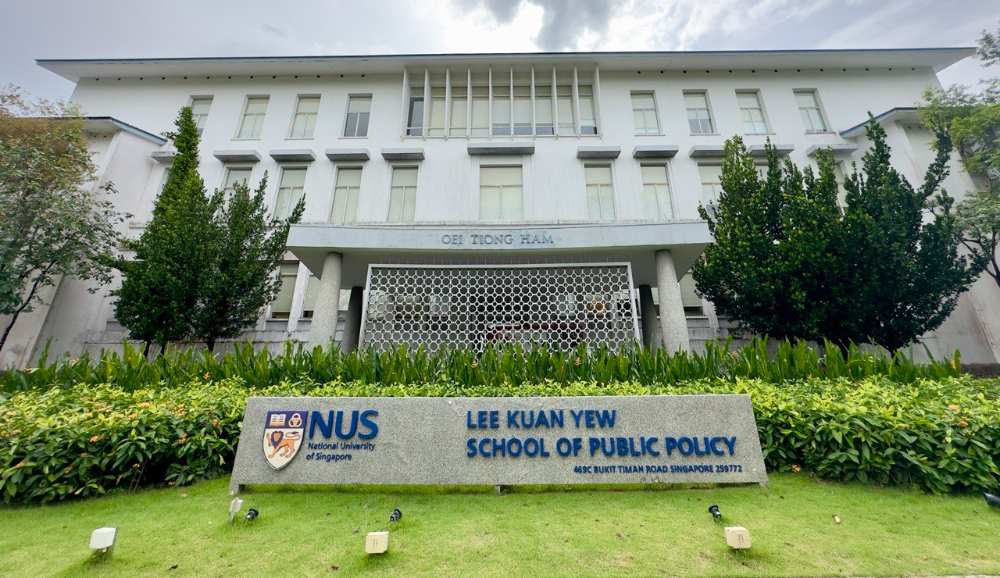 IMAGE: NG KAI
IMAGE: NG KAI
The campus includes two quadrangles surrounded by buildings named after key donors. The Oei Tiong Ham building, positioned at the Lower Quadrangle, served as the grand entrance to the Former Raffles College, while the Upper Quadrangle is bordered by the Manasseh Meyer, Federal, and Eu Tong Sen buildings.
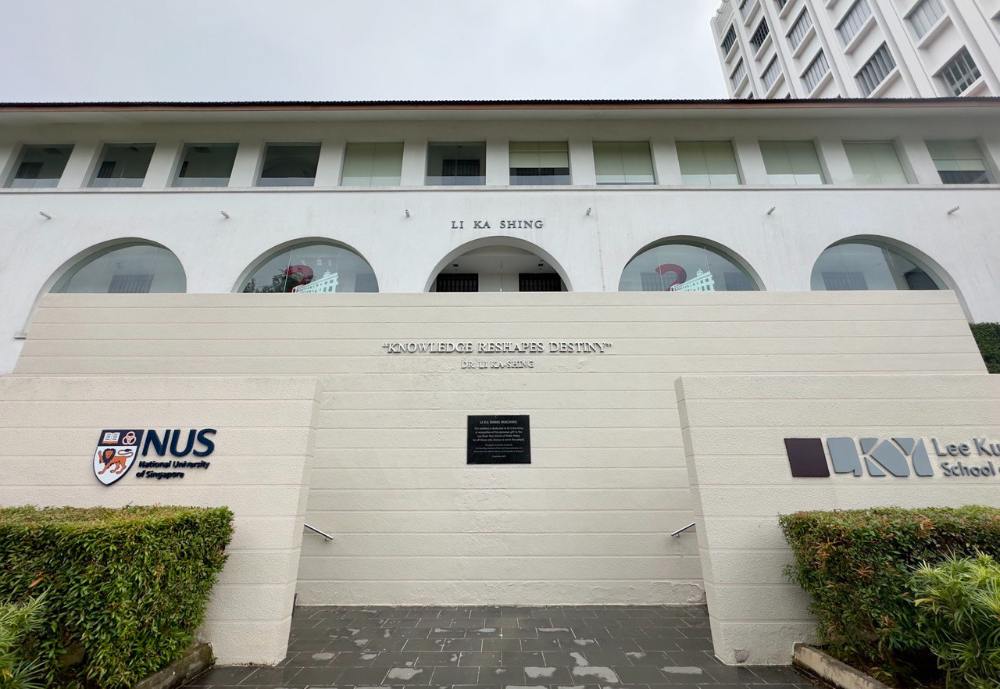 IMAGE: NG KAI
IMAGE: NG KAI
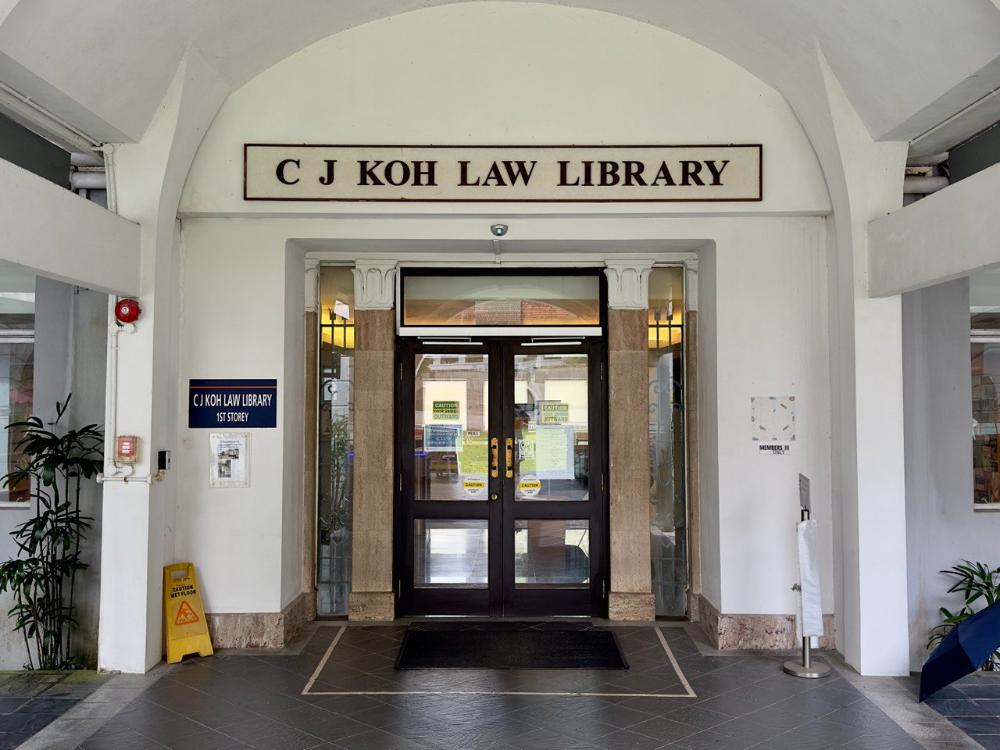 IMAGE: NG KAI
IMAGE: NG KAI
Notable additions over the years include Block A (now Li Ka Shing building) built in the 1940s, the Library building (now C. J. Koh Law Library) constructed in the 1950s, and the Tower Block (formerly Science Tower), built in 1966.
🕖 Opening hours
The campus is open 24/7, but some buildings have restricted access, and are meant only for students and staff. You can take a virtual tour of the compound here.
🎟️ Admission
Entry is free.
For the latest updates on Wonderwall.sg, be sure to follow us on TikTok, Telegram, Instagram, and Facebook. If you have a story idea for us, email us at [email protected].







